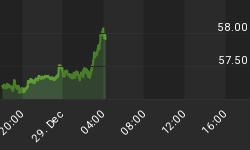Back to school! It is the beginning of September, post-Labor Day, and students everywhere are back to school.
It is the time of year when investors, too, tend to be schooled - as bond markets tend to strengthen and equity markets to weaken (relative to the overall drift). It doesn't happen every year, but the tendency in fixed income markets is strong enough that, as a rule, I demand much stronger reasons to sell bonds in September and October than during the rest of the year.
This year, we appear to be in for a special treat. We all get to learn new acronyms, like ISIS, and Americans are learning where Ukraine is on a map of the world. What fun.
Monetary policymakers tend to be resistant to further lessons, since after all they have had so many years of book learning that, darn it, they should know enough by now! And yet - there is so much about economics and monetary policy that we just don't know; so much that isn't knowable; and so much that we know with great confidence but just isn't so.
However, I have been delighted to find that recently, the subject of money velocity has been appearing more frequently in policy circles. To a monetarist, velocity is one of a very small handful of things that matter, and its absence from discussions among the learned has been a terrible sign that monetarism was not merely in retreat, but almost extinct. And yet, the predictions of monetarism have been borne out time and time again (that is, the actual predictions, not the idea that printing money causes economic growth - a prediction that presupposes a high degree of money illusion is at work), while the predictions of Keynesian economists have only worked once the parameters are revised post-hoc to fit the crisis. Increased money supply growth got Japan out of its deflationary spiral - as predicted. None of the Keynesian solutions deployed over the last two decades have worked, but the first attempt at serious money-printing worked. (Although it remains to be seen if the BOJ will keep its pedal to the metal; it certainly hasn't yet "doubled the money supply" as it had pledged to do).
High money growth - that is, transactional money and not inert reserves - always accompanies high inflation. For a time, money growth may be offset by declining money velocity, but we also know quite a bit about what causes money velocity to move. Last year I cited a rare paper by a central banker (Samuel Reynard at the Swiss National Bank) that really had insight on these almost-forgotten tenets of monetarism. And this year, I am delighted to note that some economists at the St. Louis Fed have published a brief note entitled "What Does Money Velocity Tell Us about Low Inflation in the U.S.?" While the authors, Yi Wen and Maria Arias, mistakenly focus on the velocity of base money, and thus reach an incorrect conclusion that individuals are "hoarding" money (when it in fact is sitting in bank reserves, untouched), it is nevertheless the right topic and the right question, and that's most of the battle.
I have previously shown the chart of interest rates and money velocity, so let me show it again.

This is important, because it's the single biggest risk to a significant inflation accident. While the low vacancy rate and the rapid growth in housing prices will continue to push rents higher, bringing median and/or core inflation above 3% by early next year, we can live with 3%. The risk for much worse inflation is all tied to a rebound in monetary velocity. It bears repeating. From 2008 to 2013, money growth was rapid but declining money velocity (tied to interest rate declines, mainly) restrained inflation. If money growth remains at the same level but money velocity merely stabilizes, it is consistent with inflation of 3%-4%. But if money velocity reverses even a part of its post-crisis decline, then inflation could move appreciably higher. Since Q2 of 2008, the velocity of M2 has fallen at a 3.76% annualized rate; were that to reverse, with the same money supply growth, then the 3-4% inflation becomes 6.75%-7.75% inflation, which I think we would all agree is a bad thing.
Now, the unfortunate thing is that models of velocity that incorporate interest rates and certain other factors already indicate that money velocity should be rising. The chart below shows our proprietary model of money velocity; as you can see, since mid-2013 there has been a large and growing gap between what the model implies and where money velocity has actually been recorded. This might well mean that the model is wrong. But we should also take it as indicating the risk of a rise in velocity is real, whether it is a 1% or 2% rise per year, or a 15% snap-back over a shorter period of time.

As I always admonish, that's a big picture concern, and not something to trade tomorrow. I would be gradually accumulating positions in inflation swaps, caps, breakevens, and broad commodity indices. There is time before people start to get really concerned. But to my mind, what is interesting is that the central bankers are now at least starting to reconsider velocity.
You can follow me @inflation_guy!
Enduring Investments is a registered investment adviser that specializes in solving inflation-related problems. Fill out the contact form at http://www.EnduringInvestments.com/contact and we will send you our latest Quarterly Inflation Outlook. And if you make sure to put your physical mailing address in the "comment" section of the contact form, we will also send you a copy of Michael Ashton's book "Maestro, My Ass!"
















